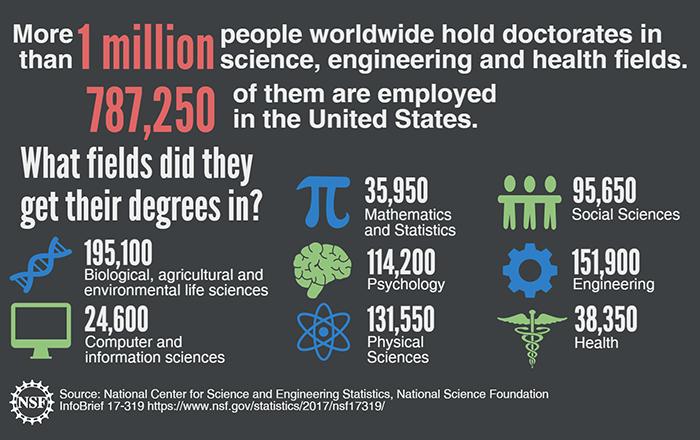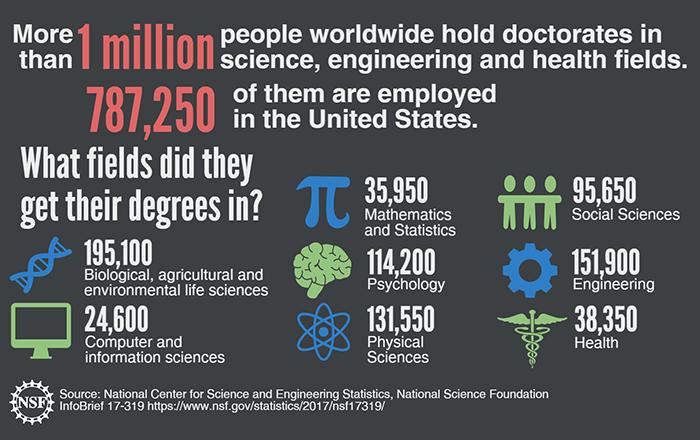
Credit: Rob Margetta
The National Science Foundation's National Center for Science and Engineering Statistics has more than doubled the sample size of its 2015 Survey of Doctorate Recipients in order to examine employment characteristics for specific fields of degree for the first time.
The 2015 survey reports employment data for eight broad degree fields, as well as more than 200 "fine" fields of degree within those broad categories.
More than 1 million people worldwide held doctorates from U.S. institutions in science, engineering and health (SEH) fields. The 2015 survey sampled data from 120,000 people who had earned doctorates from U.S. institutions in SEH fields.
About 88 percent of SEH doctorate holders resided in the United States and 12 percent abroad. Of doctorate holders residing in the United States, 87 percent were part of the labor force, with 76 percent working full time. Of those not residing in the United States, 94 percent were part of the labor force.
In the United States, 47 percent of working doctorate holders were employed in the business/industry sector and 45 percent at educational institutions. Most of the doctorate holders working abroad (66 percent) were employed in the education sector.
Of doctorate holders residing in the United States, 41 percent were performing research and development (R&D) as their primary work activity. When R&D was reported as either a primary or secondary work activity, the rate increased to 63 percent.
Of the eight broad fields of degree in the survey, the rate of R&D as a primary activity ranged from 18 percent for psychology doctorate holders to 54 percent for engineering doctorate holders.
Nearly 40 percent of the U.S.-trained doctorate holders were born outside the United States, and 73 percent of this group remained in the United States in 2015. At the time of their graduation, doctorate holders born outside the United States included those with temporary visas (72 percent), permanent residents (15 percent), and U.S. citizens (13 percent).
###
For more information and detailed breakdowns of data, read the full report.
Media Contact
Stanley Dambroski
[email protected]
@NSF
http://www.nsf.gov





